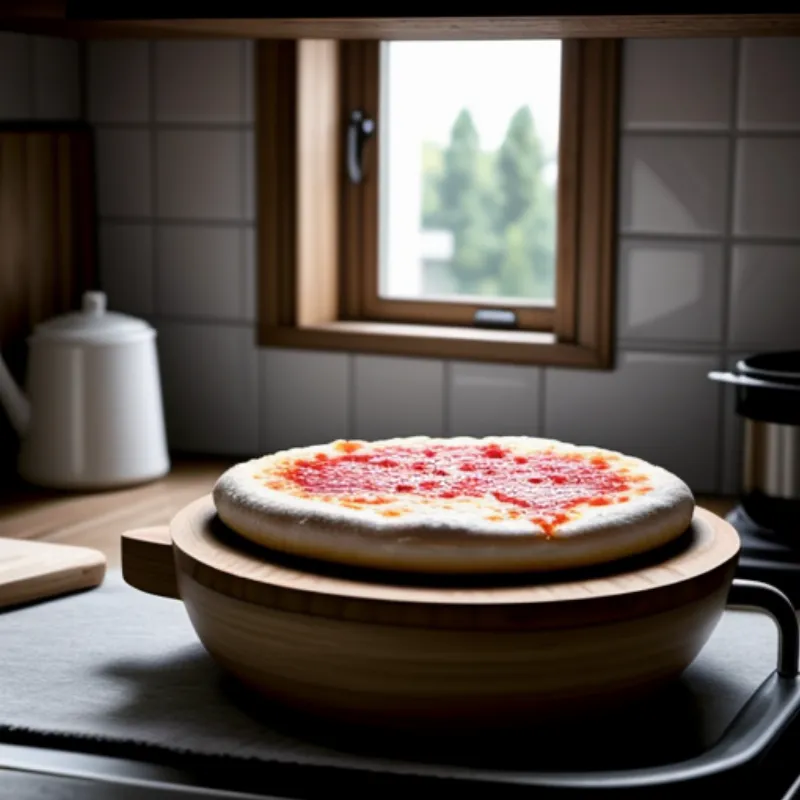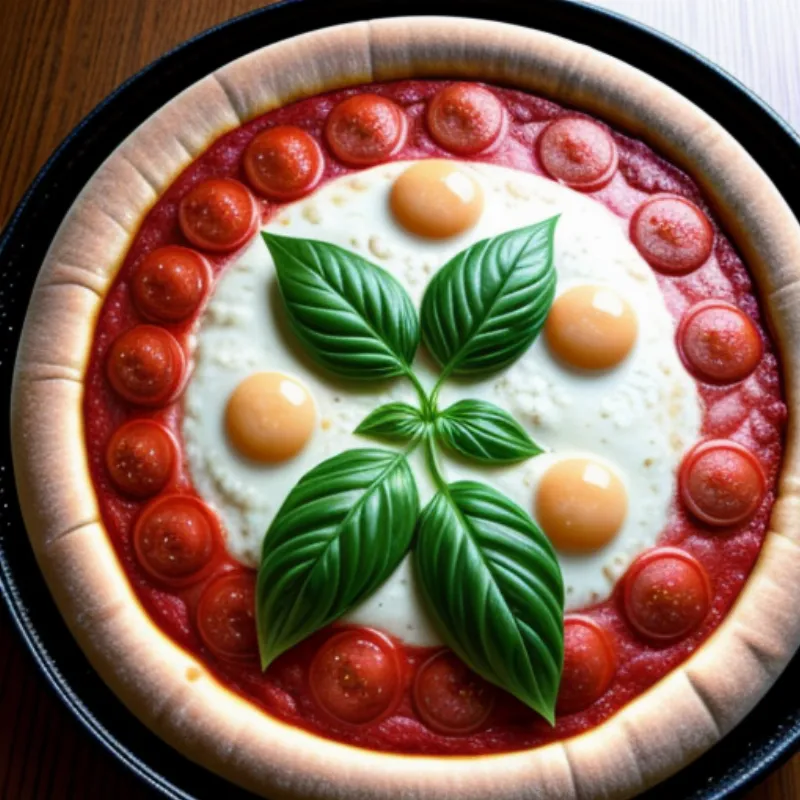Sourdough pizza crust. Just the words themselves evoke images of a bubbly, golden-brown crust with a satisfying chew and a complex, tangy flavor that elevates any pizza topping to new heights. And the best part? You can achieve this bakery-style goodness right in your own kitchen!
This comprehensive guide will walk you through the process of making sourdough pizza crust, from feeding your starter to achieving that perfect oven spring. We’ll cover everything from essential ingredients to troubleshooting tips, ensuring you have all the knowledge needed to become a master sourdough pizza maker.
From Starter to Pizza Stone: Gathering Your Supplies
Ingredients: The Foundation of Flavor
Before we embark on our sourdough pizza journey, let’s gather the key players:
- Active Sourdough Starter: You’ll need a thriving sourdough starter that’s bubbly and ready to go. If yours needs a little encouragement, give it a feeding a few hours before you plan to make your dough.
- Bread Flour: This high-protein flour gives your crust that desirable chewiness.
- Water: Use lukewarm water to activate the yeast in your starter.
- Olive Oil: Adds flavor and contributes to a crispy crust.
- Salt: Enhances the flavors and controls the fermentation process.
- Honey or Sugar (Optional): A small amount can be added to give your yeast a little boost, especially if your kitchen is on the cooler side.
Tools of the Trade: Equipping Your Kitchen
Now that we’ve covered the ingredients, let’s make sure you have the right tools on hand:
- Large Mixing Bowl: This will be your dough’s playground.
- Kitchen Scale: For precise measurements, a kitchen scale is a baker’s best friend.
- Plastic Wrap or a Damp Kitchen Towel: To keep your dough cozy and hydrated during its rise.
- Pizza Stone or Baking Sheet: A preheated pizza stone will give you that irresistible crispy crust, but a baking sheet will work in a pinch.
- Parchment Paper: Prevents your pizza from sticking to the baking surface.
- Pizza Cutter or Sharp Knife: For slicing your masterpiece into perfect portions.
Crafting Your Sourdough Pizza Crust: A Step-by-Step Journey
1. Mixing and Kneading: Awakening the Gluten
- Combine the Ingredients: In your large mixing bowl, combine your active sourdough starter, lukewarm water, bread flour, olive oil, and salt. Mix until a shaggy dough forms.
- Knead to Perfection: Turn the dough out onto a lightly floured surface and knead for 8-10 minutes, or until the dough becomes smooth and elastic.
- First Rise: Let the Dough Slumber: Place the dough in a lightly oiled bowl, cover it with plastic wrap or a damp kitchen towel, and let it rise in a warm place for 4-6 hours, or until doubled in size.
2. Shaping and Proofing: The Art of Pizza Transformation
- Divide and Conquer: Gently punch down the dough to release any air bubbles. Divide it into two equal portions for two medium-sized pizzas.
- Shaping Your Crust: On a lightly floured surface, use your hands or a rolling pin to shape each portion into your desired pizza crust thickness.
- Second Rise: A Final Rest: Transfer the shaped dough onto parchment paper-lined baking sheets or pizza peels. Cover loosely with plastic wrap and let them proof for another hour.
3. Baking to Golden Perfection: The Grand Finale
- Preheat Your Oven: Preheat your oven to 450°F (232°C) with your pizza stone or baking sheet inside.
- Prepare for Baking: Carefully transfer your pizza dough onto the preheated pizza stone or baking sheet.
- Add Your Toppings: Brush the crust lightly with olive oil and add your favorite pizza sauce, cheese, and toppings.
- Bake Until Golden: Bake for 12-15 minutes, or until the crust is golden brown and the cheese is bubbly and slightly charred in spots.
Expert Tips for Sourdough Pizza Success
- Flour Power: The amount of flour needed may vary depending on the hydration of your starter and the humidity of your environment. Add flour gradually until the dough is no longer overly sticky.
- Starter Strength: The activity of your starter will affect the rise time of your dough. If your starter is very active, your dough may rise more quickly.
- Baking Surface: A pizza stone will yield a crispier crust, but a baking sheet will work just fine.
- Experiment with Flavors: Don’t be afraid to get creative with your toppings! Sourdough pizza crust pairs beautifully with a variety of flavors.
FAQs: Addressing Your Sourdough Pizza Queries
Q: Can I use all-purpose flour instead of bread flour?
A: While all-purpose flour will work, bread flour’s higher protein content will give you a chewier, more flavorful crust.
Q: My dough isn’t rising. What could be wrong?
A: Ensure your starter is active and bubbly. If your kitchen is cold, you can try placing the dough in a slightly warmed oven (turned off) to rise.
Q: Can I freeze sourdough pizza dough?
A: Absolutely! After the first rise, you can freeze the dough for later use. Thaw it overnight in the refrigerator before shaping and baking.
 Sourdough Pizza Dough Rising
Sourdough Pizza Dough Rising
 Sourdough Pizza with Fresh Basil
Sourdough Pizza with Fresh Basil
Conclusion: Embrace the Joy of Sourdough Pizza Making
Making sourdough pizza crust is a labor of love, but the reward of a flavorful, perfectly textured pizza is well worth the effort. So gather your ingredients, awaken your starter, and embark on this culinary adventure. Your taste buds (and family and friends) will thank you!
